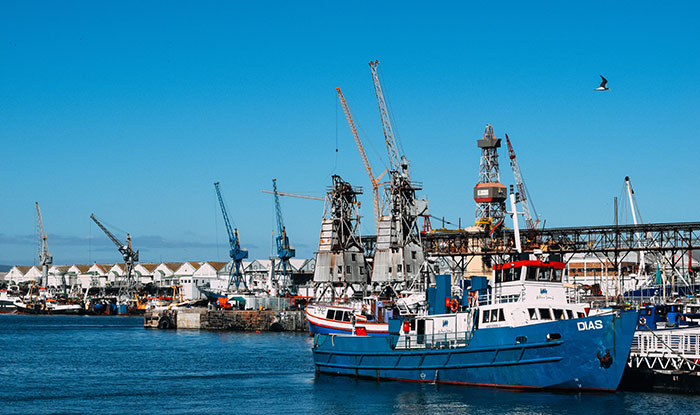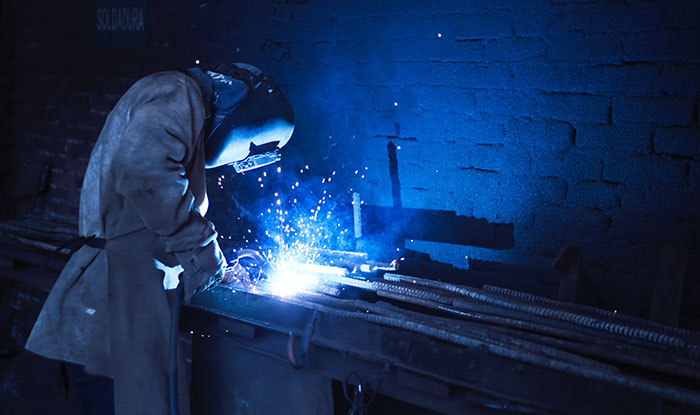Industrial Foot Protection in the Factory Workplace
From dawn until dusk, America’s factories purr and growl as they churn out refined materials, mechanical parts, chemicals and consumer products – the stuff that makes the country run. And inside each one of those factories is a team dedicated to doing the job right. When the job is in progress, everyone has to focus and do their part so the whole operation goes smoothly. Sometimes, though, everyone can get a little too caught up in their work and lose sight of another important aspect of the job: Safety.
Whether it’s moving parts, high temperatures or spilled liquids, a factory can be a dangerous place if the safety regulations aren’t followed exactly. And many factory workers would say they just don’t have the time to worry about something like foot health – that is, until they have a problem. Because when there’s a problem with the feet, the whole body suffers – and so does the job. In many workplace settings foot health is of the utmost importance, but in a factory it takes on a whole other level of importance.
In a factory setting, there are three major dangers to employee foot health: slipping accidents, falling objects and standing all day. Each of these could easily put an employee out of commission for days or weeks. Here are some steps you can take to prevent them.
Slip and Fall Accidents
According to the U.S. Centers for Disease Control and Prevention, Americans spend an estimated $70 billion in worker’s comp and medical bills on occupational fall incidents. A slip-and-fall accident may not have a harsh-sounding edge to it, but they are a serious matter that employees and employers need to be aware of and proactive about preventing. Especially in factories that use industrial lubricants or oils, the chances of experiencing such an incident rises dramatically. To combat this, all workers should wear a shoe or boot with a slip-resistant sole. It’s the ideal way to prevent dangerous slip-and-fall accidents.
Falling Objects
Another common cause of foot injuries is falling objects. A heavy object can bruise, break or otherwise damage a worker’s foot. Combined with slip-and-fall injuries, these two dangers make up about 25 percent of all disabling injuries in the workplace, reported EHS Today. In some cases, these types of injuries can be avoided by putting up protective barriers. In others, however, it’s best to wear a boot or shoe with a safety toe. In many cases a lightweight composite toe provides sufficient protection. Steel-toed footwear is heavier, but can provide even more protection, such as stopping a heavy object from crushing or severing a worker’s toes. For the most industrial foot protection, consider getting factory footwear that has both a safety toe and a slip-resistant sole.
Standing All Day
While prolonged standing may not seem as dangerous as the above mentioned problems, it is a big issue for all employees who spend the majority of the day on their feet. While a single day’s work won’t cause irreparable damage, months and years of standing all day could cause problems like plantar fasciitis or Morton’s neuroma. These ailments can creep in a little at a time until they become chronic sources of pain. An easy way to prevent these conditions is to always wear comfortable, well-fitting shoes and replace shoes that are worn out or damaged. Wearing factory footwear with a thin, damaged sole isn’t much better than walking around barefoot. Work shoes should provide comfortable padding, a little wiggle room in the toes and a heel that moves with the foot rather than slipping up and down. Workers with high arches may consider wearing an cushioning insert – it’s the first step in preventing plantar fasciitis and can be very effective.
Foot health should be a part of any factory’s general safety plan. EHS Today suggested creating a thorough foot safety guideline, complete with training. In fact, the Occupational Safety and Health Administration (OSHA) typically requires that employees sign a form stating that they have received such training and understand the presented requirements.
Chronic conditions and accidents can easily run a well-oiled factory to a grinding halt. Foot health and safety are easy to forget, but they’re the literal base of all productivity. When there are problems with the foundation, the rest of the operation is in jeopardy. Always have an industrial safety shoe program in place, and make sure that all employees have been educated about the importance of protective footwear.
Employees and Your Bottom line.
Don't Forget To Share This Post!

Top 10 Loading Dock Safety Tips
Loading dock areas are notorious for their numerous safety hazards. Sidestep risk to your workers by following these 10 loading dock safety tips.

Keep Safe While Working In a Metal Shop
Being aware of the common injuries associated with working in a metal or machine shop is critical. Here are the most common hazards and safety tips.

Think About Safety In The Wood Shop
Whether you're a manager, craftsman or new employee, here are 4 important and unexpected hazards to safety in the wood shop, regardless of size.